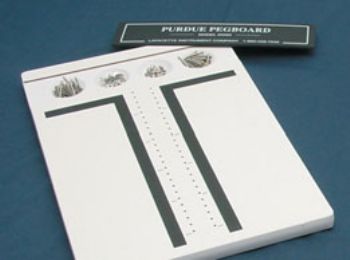











What are Dexterity Tests?
Dexterity refers to the ability of a person to use the fingers, hands and arms to perform a task. Some people are ambidextrous, which means they have the ability to perform tasks with the same or similar skill level using either the right or left hand. Dexterity skill levels are as varied as the tasks that are performed by individuals every day. For these tasks to be grouped and understood so skill levels can be compared between individuals, or to ensure that improvements can be measured, dexterity tests are used across a broad spectrum of fields and industry.
These tests allow staffing agencies to compare individual test results with the acquired standards to determine skill level. To pre-screen employees for jobs that rely on fine motor skills and coordination, dexterity tests measure the use of a person’s fingers, hands and arms while performing certain tasks. Types of jobs that often require passing hand dexterity tests are assembly line work, watch repair or lab work. Assembly line work often includes fast manipulation of small objects and working with small parts. The tests give employers a good indication of how well a person will do at a particular job as well as an assessment of their manual abilities.
Dexterity tests additionally allow occupational and physical therapists to develop rehabilitation plans for patients and to measure the effectiveness of their programs. They can help identify and evaluate certain forms of brain damage, identify neurologically based learning disabilities, and can assist in diagnosing dyslexia.
What are Different Types of Dexterity Tests?
Dexterity tests measure the accuracy of hand and finger movements under controlled conditions. There are several ways to assess dexterity and coordination; the following are just a few examples.
The Minnesota manual dexterity test involves having a person place round pegs into holes on a punched out sheet. It evaluates their ability to grab and place objects quickly. There are several different applications of this test, including an assessment of limitations caused by carpal tunnel, and dexterity problems from other hand and wrist injuries. It can also be used to assess the ability to perform assembly line and manufacturing work.
The O’Connor finger dexterity test evaluates fine motor skills by requiring the extensive use of finger tips to place pins into a peg board. It is timed, so speed and accuracy are considered in the test scoring.
The box and block test uses cubes and focuses on picking up the cubes. Precise placement of the blocks is not required. Instead, they are dropped into a container that is close to the container from which they are picked up.
The grooved pegboard test involves placing pins in holes on a board, and the major difference is that the pegs have to be oriented correctly to fit in the slots. This test requires more visual acuity to perform, rather than simply feeling for a cylindrical hole. The individual must watch to ensure that the pins are turned correctly so they will fit.
The pegboard test measures manual dexterity using a straightforward task that requires assembling pins, washers and collars, and placing them in holes. It gives a measure of dexterity with both hands and can be compared to precise job requirements. This test is used by recruitment agencies for selecting production workers, semi-skilled operators, and assemblers.
The fine dexterity test measures fine finger and small tool dexterity using a task that requires the precision assembly of collars and washers on pins. This test is mainly used for assessing candidates for small parts assembly, such as within the electronics industry.
What is the Purdue Pegboard Test?
The Purdue pegboard test is a timed physical test used to measure brain function and manual dexterity. Individuals are to place small pins into holes in the board using a specific hand and following a specific process. This test may be used as an occupational recovery tool after brain or hand damage, as a diagnostic tool for learning disabilities, or as a probable performance indicator for those applying for assembly jobs.
It consists of five scores. In the first part of the test, participants are given 30 seconds to place as many pins in the right hand column of holes as possible. The pins can only be picked up and placed with the right hand, and they must be inserted into the holes in the proper order. In the second part of the test, this process is repeated by using the left hand and the left hand column of holes.
In the third part of the test, participants have 30 seconds to place pins into both the right and left columns at the same time. They must use the right hand for the right column and the left hand for the left column, beginning at the top and working downward. The fourth test score is a combination of the first two scores, which does not require the individual’s participation.
The final portion, usually called the assembly test, requires the participant to pick up a pin and insert it into a hole with the right hand and pick up a washer and place it over the pin with the left hand. Then, pick up a collar and place it over the pin with the right hand and place a final washer on top of the collar with the left hand. Then, move to the next hole and repeat the process, having 60 seconds to complete as many assemblies as possible.
Physical and occupational therapists can use the Purdue pegboard test to rehabilitate people after an accident. Repetition of the test serves as a progress indicator and encourages the use of the injured muscles. Since the test is timed, it allows the ability to evaluate progress in an objective, clear and measurable way.
Rehabmart is pleased to carry a wide assortment of dexterity tests and tools from well-respected vendors, such as Sammons Preston, Fabrication Enterprises, North Coast and Maddak.
Hulet Smith, OT
Rehabmart Co-Founder & CEO
lb